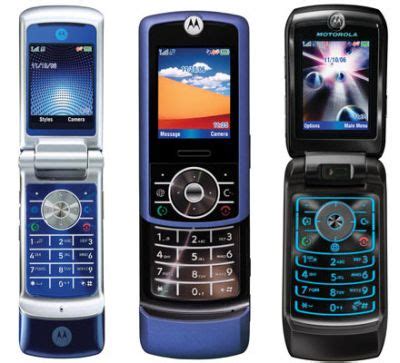2006 Mobile Phones Review

The year 2006 was a pivotal moment in the evolution of mobile phones, marking a significant shift towards more sophisticated devices that would eventually pave the way for the smartphones we use today. This period saw the introduction of various models from leading manufacturers, each boasting unique features that catered to different user preferences and needs. In this review, we will delve into some of the most notable mobile phones of 2006, examining their specifications, user experiences, and the impact they had on the market.
Market Overview and Trends

2006 witnessed a surge in the demand for mobile phones with enhanced capabilities, including better camera quality, improved music playback, and internet browsing. Manufacturers responded by incorporating these features into their devices, often with a focus on sleek designs and user-friendly interfaces. Nokia, Motorola, and Sony Ericsson were among the top brands, each releasing models that stood out in terms of innovation and consumer appeal.
Nokia’s Dominance
Nokia, in particular, maintained its stronghold on the market with a wide range of offerings. The Nokia N73, for example, was a flagship model that featured a 3.2-megapixel camera, a built-in music player, and support for 3G networks. Its Symbian operating system provided a robust platform for various applications, making it a favorite among both consumers and business users. Another notable model from Nokia was the 6233, which, although not as feature-rich as the N73, offered a balance of functionality and affordability, making it accessible to a broader audience.
| Model | Camera Resolution | Operating System | Network Support |
|---|---|---|---|
| Nokia N73 | 3.2 MP | Symbian | 3G |
| Nokia 6233 | 2 MP | Symbian | 3G |

Motorola’s Contributions

Motorola also made significant contributions to the 2006 mobile phone landscape, particularly with the RAZR V3i. This sleek, ultra-thin device was not only a style icon but also packed a 1.23-megapixel camera and a music player, making it a versatile option for users. The RAZR series became synonymous with Motorola’s brand identity, symbolizing innovation and design excellence. Furthermore, Motorola’s SLVR L7, with its iPod-like music interface, was another notable release, appealing to music enthusiasts with its dedicated music controls and storage capacity.
Sony Ericsson’s Music-Centric Approach
Sony Ericsson, a joint venture between Sony and Ericsson, focused on integrating high-quality music capabilities into their devices. The Walkman series, such as the W810i, exemplified this approach, offering users a comprehensive music experience with features like dedicated music buttons, robust storage for songs, and superior sound quality. This strategy helped Sony Ericsson carve out a niche for itself in the market, appealing to consumers who valued music playback as a key feature in their mobile phones.
Key Points
- Nokia maintained its market lead with a diverse range of models catering to different user needs.
- Motorola's RAZR series revolutionized phone design with its slim profile and feature set.
- Sony Ericsson's Walkman phones set a new standard for music playback on mobile devices.
- The year 2006 saw significant advancements in camera technology, with several models featuring cameras with resolutions of 2 megapixels or higher.
- 3G network support became more prevalent, enabling faster data speeds and enhancing the overall mobile internet experience.
In conclusion, 2006 was a transformative year for the mobile phone industry, marked by innovations in design, functionality, and user experience. The models released during this period not only reflected the technological advancements of the time but also set the stage for the future of mobile communication, paving the way for the smartphones that would follow in the subsequent years.
What were some of the key features that defined mobile phones in 2006?
+Key features included improved camera resolutions, enhanced music playback capabilities, support for 3G networks, and sleek, user-friendly designs.
Which brands were leading the market in 2006?
+Nokia, Motorola, and Sony Ericsson were among the top brands, each offering innovative models that catered to different user preferences.
How did the mobile phone market evolve after 2006?
+The market continued to evolve with the introduction of smartphones, led by Apple’s iPhone in 2007, which integrated mobile phones with internet communications and multimedia capabilities, setting the stage for modern smartphones.



